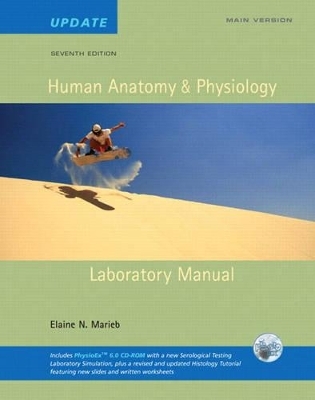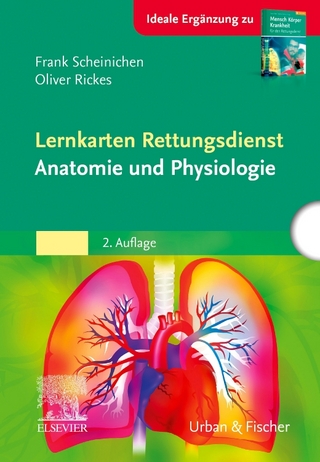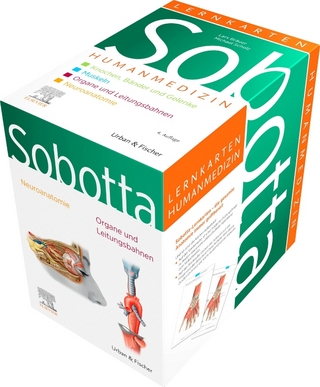
Human Anatomy & Physiology Lab Manual, Main Version, Update with Access to PhysioEx 6.0
Benjamin-Cummings Publishing Company, Subs of Addison Wesley Longman, Inc
978-0-8053-7252-6 (ISBN)
- Titel erscheint in neuer Auflage
- Artikel merken
For Elaine N. Marieb, taking the student's perspective into account has always been an integral part of her teaching style. Dr. Marieb began her teaching career at Springfield College, where she taught anatomy and physiology to physical education majors. She then joined the faculty of the Biological Science Division of Holyoke Community College in 1969 after receiving her Ph.D. in zoology from the University of Massachusetts at Amherst. While teaching at Holyoke Community College, where many of her students were pursuing nursing degrees, she developed a desire to better understand the relationship between the scientific study of the human body and the clinical aspects of the nursing practice. To that end, while continuing to teach full time, Dr. Marieb pursued her nursing education, which culminated in a Master of Science degree with a clinical specialization in gerontology from the University of Massachusetts. It is this experience, along with stories from the field - including those of former students, now in health careers - that has informed the development of the unique perspective and accessibility for which her texts and laboratory manuals are known. In her ongoing commitment to students and her realization of the challenges they face, Dr. Marieb has given generously to provide opportunities for students to further their education. She contributes to the New Directions, New Careers Program at Holyoke Community College by providing several full-tuition scholarships each year for women returning to college after a hiatus or who are attending college for the first time and would otherwise be unable to continue with their studies without financial support. She funds the E. N. Marieb Science Research Awards at Mount Holyoke College, which promotes research by undergraduate science majors, and generously contributed to the University of Massachusetts at Amherst where she provided funding for reconstruction and instrumentation of a cutting-edge cytology research laboratory that bears her name. In 1994, Dr. Marieb received the Benefactor Award from the National Council for Resource Development, American Association of Community Colleges, which recognizes her ongoing sponsorship of student scholarships, faculty teaching awards, and other academic contributions to Holyoke Community College. In May 2000, the science building at Holyoke Community College was named in her honor. Additionally, while actively engaged as an author, Dr. Marieb serves as a consultant for the Benjamin Cummings InterActive PhysiologyA A CD-ROM series, and is an active member of the Human Anatomy and Physiology Society (HAPS). Anatomy & Physiology, Second Edition is the latest expression of her commitment to student needs in their pursuit of the study of A&P.
Getting Started - What to Expect, The Scientific Method, and Metrics The Human Body: An Orientation Exercise 1. The Language of Anatomy. Exercise 2. Organ Systems Overview. The Microscope and Its Uses Exercise 3. The Microscope. The Cell Exercise 4. The Cell - Anatomy and Division. Exercise 5A. The Cell - Transport Mechanisms and Cell Permeability: Wet Lab. Histology: Basic Tissues of the Body Exercise 6A. Classification of Tissues. The Integumentary System and Body Membranes Exercise 7. The Integumentary System. Exercise 8. Classification of Body Membranes. The Skeletal System Exercise 9. Overview of the Skeleton: Classification and Structure of Bones and Cartilages. Exercise 10. The Axial Skeleton. Exercise 11. The Appendicular Skeleton. Exercise 12. The Fetal Skeleton. Exercise 13. Articulations and Body Movements. The Muscular System Exercise 14. Microscopic Anatomy, Organization, and Classification of Skeletal Muscle. Exercise 15. Gross Anatomy of the Muscular System. Exercise 16A. Skeletal Muscle Physiology - Frog Experimentation: Wet Lab. The Nervous System Exercise 17. Histology of Nervous Tissue. Exercise 18A. Neurophysiology of Nerve Impulses. Exercise 19. Gross Anatomy of the Brain and Cranial Nerves. Exercise 20. Electroencephalography. Exercise 21. Spinal Cord, Spinal Nerves, and the Autonomous Nervous System. Exercise 22. Human Reflex Physiology. Exercise 23. General Sensation. Exercise 24. Special Senses: Vision. Exercise 25. Special Senses: Hearing and Equilibrium. Exercise 26. Special Senses: Olfaction and Taste. The Endocrine System Exercise 27. Anatomy and Basic Function of the Endocrine Glands. Exercise 28A. Experiments on Hormonal Action: Wet Lab. The Circulatory System Exercise 29A. Blood. Exercise 30. Anatomy of the Heart. Exercise 31. Conduction System of the Heart and Electrocardiography. Exercise 32. Anatomy of the Blood Vessels. Exercise 33A. Human Cardiovascular Physiology - Blood Pressure and Pulse Determinations. Exercise 34A. Frog Cardiovascular Physiology: Wet Lab. Exercise 35A. The Lymphatic System and Immune Response. The Respiratory System Exercise 36. Anatomy of the Respiratory System. Exercise 37A. Respiratory System Physiology. The Digestive System Exercise 38. Anatomy of the Digestive System. Exercise 39A. Chemical and Physical Processes of Digestion: Wet Lab. The Urinary System Exercise 40. Anatomy of the Urinary System. Exercise 41A. Urinalysis. The Reproductive System, Development, and Heredity Exercise 42. Anatomy of the Reproductive System. Exercise 43. Physiology of Reproduction: Gametogenesis and the Female Cycles. Exercise 44. Survey of Embryonic Development. Exercise 45. Principles of Heredity. Surface Anatomy Exercise 46. Surface Anatomy Roundup. Dissection Exercises (Cat Version Only) 1. Dissection and Identification of Cat Muscles. 2. Dissection of Cat Spinal Nerves. 3. Identification of Selected Endocrine Organs of the Cat. 4. Dissection of the Blood Vessels of the Cat. 5. The Main Lymphatic Ducts of the Cat. 6. Dissection of the Respiratory System of the Cat. 7. Dissection of the Digestive System of the Cat. 8. Dissection of the Urinary System of the Cat. 9. Dissection of the Reproductive System of the Cat. Dissection Exercises (Fetal Pig Version Only) 1. Dissection and Identification of Fetal Pig Muscles. 2. Dissection of the Spinal Cord and Spinal Nerves. 3. Identification of Selected Endocrine Organs of the Fetal Pig. 4. Dissection of the Blood Vessels of the Fetal Pig. 5. Identification of the Main Lymphatic Ducts of the Fetal Pig. 6. Dissection of the Respiratory System of the Fetal Pig. 7. Dissection of the Digestive System of the Fetal Pig. 8. Dissection of the Urinary System of the Fetal Pig. 9. Dissection of the Reproductive System of the Fetal Pig. PhysioExaA A v6.0 Computer Simulations Exercise 5B. Cell Transport Mechanisms and Permeability: Computer Simulation. Exercise 6B. Using the Histology Module. Exercise 16B. Skeletal Muscle Physiology: Computer Simulation. Exercise 18B. Neurophysiology of Nerve Impulses: Computer Simulation. Exercise 28B. Endocrine System Physiology: Computer Simulation. Exercise 29B. Blood. Exercise 33B. Cardiovascular Dynamics: Computer Simulation. Exercise 34B. Frog Cardiovascular Physiology: Computer Simulation. Exercise 35B. Serological Testing: Computer Simulation. Exercise 37B. Respiratory System Mechanics: Computer Simulation. Exercise 39B. Chemical and Physical Processes of Digestion: Computer Simulation. Exercise 41B. Renal Physiology-The Function of the Nephron: Computer Simulation. Exercise 47. Acid/Base Balance: Computer Simulation. Review Sheets. Histology Atlas. Human Anatomy Atlas. PhysioExaA A Review Sheets. PhysioExaA A Histology Review Supplement. Appendix A. The Metric System. Appendix B. A.D.A.M. Interactive Anatomy Correlations.
| Erscheint lt. Verlag | 14.4.2005 |
|---|---|
| Verlagsort | San Francisco |
| Sprache | englisch |
| Maße | 270 x 279 mm |
| Gewicht | 2000 g |
| Themenwelt | Studium ► 1. Studienabschnitt (Vorklinik) ► Anatomie / Neuroanatomie |
| Studium ► 1. Studienabschnitt (Vorklinik) ► Physiologie | |
| ISBN-10 | 0-8053-7252-0 / 0805372520 |
| ISBN-13 | 978-0-8053-7252-6 / 9780805372526 |
| Zustand | Neuware |
| Haben Sie eine Frage zum Produkt? |
aus dem Bereich


